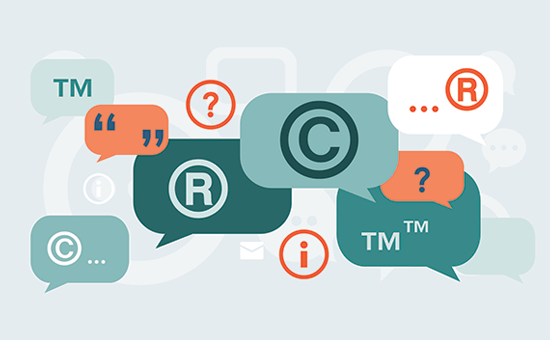Intellectual property (IP) refers to creations of the mind. Such as inventions, literary and artistic works, designs and symbols, names and images used in commerce. IP is protected in law by, for example, copyright, trademarks and patents. Its enable people to earn recognition or financial benefit from what they invent or create. By striking the right balance between the interests of innovators and the wider public interest, the IP system aims to foster an environment in which creativity and innovation can flourish.
1. Copyright
Copyright is a legal term used to describe the rights that creators have over their literary and artistic works. Works covered by copyright range from books, music, paintings, sculpture, and films, to computer programs, databases, advertisements, maps, and technical drawings. There are two types of rights under copyright:
- Economic rights, which allow the rights owner to derive financial reward from the use of their works by others; and
- Moral rights, which protect the non-economic interests of the author.
Most copyright laws state the rights owner has the economic right to authorize or prevent certain uses in relation to a work. But in some cases, to receive remuneration for the use of their work. The economic rights owner of a work can prohibit or authorize:
- its reproduction in various forms, such as printed publication or sound recording
- the public performance, such as in a play or musical work
- its recording, for example, in the form of compact discs or DVDs
- the broadcasting, by radio, cable or satellite
- its translation into other languages; and
- its adaptation, such as a novel into a film screenplay.
- Examples of widely recognized moral rights include the right to claim authorship of a work and the right to oppose
- changes to a work that could harm the creator’s reputation.
2. Patent
In general, a patent is an exclusive right granted for an invention. Which is a product or a process that provides a new way of doing something or new technical solution to a problem. To get a patent, technical information about the invention must be disclosed to the public in a patent application.
What kind of protection does a patent offer?
In principle, the patent owner has the exclusive right to prevent or stop others from commercially exploiting the patented invention. In other words, patent protection means that the invention cannot be commercially made, used, distributed, imported or sold by others without the patent owner’s consent.
Patents are territorial rights. In general, the exclusive rights are only applicable in the country or region. In which a patent has been filed and granted, in accordance with the law of that country or region.
3. Trademark
A trademark is a sign capable of distinguishing the goods or services of one enterprise from those of other enterprises. Intellectual property rights are protecting the trademarks.
What rights does trademark registration provide?
In principle, a trademark registration will confer an exclusive right to the use of the registered trademark. This implies that the trademark can be exclusively used by its owner, or licensed to another party for use in return for payment. Registration provides legal certainty and reinforces the position of the right holder, for example, in case of litigation.
How long does trademark protection last?
The term of trademark registration can vary, but is usually ten years. It can be renewed indefinitely on payment of additional fees. Trademark rights are private rights and protection is enforced through court orders.
What kinds of trademark can be registered?
A word or a combination of words, letters, and numerals can perfectly constitute a trademark. But trademarks may also consist of drawings, symbols, three-dimensional features. Such as the shape and packaging of goods, non-visible signs, or color shades used as distinguishing features. The possibilities are almost limitless.
In conclusion, every product that have brand can be protected from being copied or cheat by this law which is copyright, trademarks and patents. It just those laws are different from each other.




